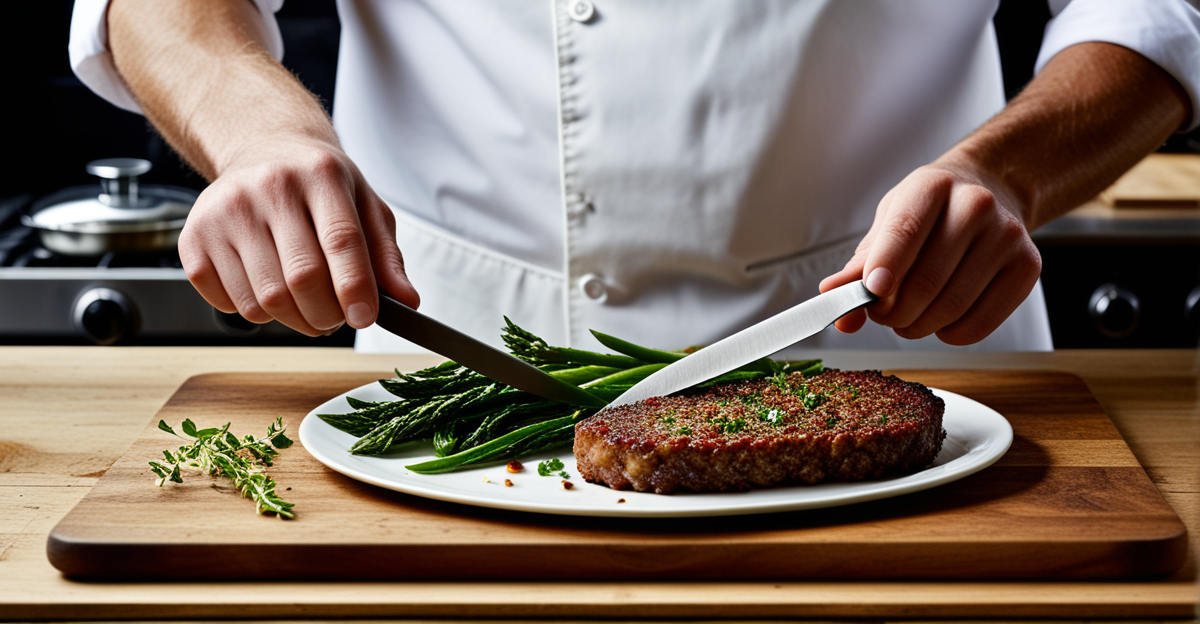Embracing Innovation in British Culinary Traditions
Embracing modern cooking techniques has played a significant role in the ongoing evolution of British cuisine modernization. Contemporary cooking methods, such as sous vide and controlled fermentation, allow chefs to respect traditional British food while enhancing texture and flavour in ways previously unattainable. This fusion ensures that updated classics maintain the essence of original recipes but also appeal to modern palates.
Balancing the preservation of heritage with culinary advancement requires a thoughtful approach. Traditional British dishes often rely on familiar ingredients and time-honoured preparations. By integrating innovation carefully, chefs avoid overshadowing the cuisine’s roots. Instead, they elevate these dishes, adding complexity without losing authenticity. This method fosters appreciation for both history and progress in the culinary community.
In parallel : How Do British Culinary Traditions Adapt to Modern Dietary Trends?
Moreover, British cuisine modernization encourages experimenting with presentation and ingredient pairing, which enriches the dining experience. For example, the use of precise temperature control exemplifies innovation that improves consistency while upholding traditional flavours. This synergy between old and new underlines how British culinary traditions can thrive through innovation, inviting chefs and home cooks alike to explore fresh techniques without abandoning cultural identity.
Iconic British Dishes Reinvented Through Technology
Modern British recipes demonstrate how classic British dishes can be transformed using contemporary cooking methods. Techniques such as sous vide allow chefs to cook meats and vegetables evenly at controlled temperatures, resulting in enhanced textures and intensified flavors that elevate traditional British food without losing its authenticity. For instance, a classic roast beef prepared sous vide retains juiciness and tenderness far beyond conventional ovens.
Topic to read : How Can UK-Inspired Cooking Transform Your Everyday Meals?
Molecular gastronomy adds an artistic dimension by altering textures and presentations, turning familiar ingredients into innovative forms. This approach refreshes updated cuisine examples like shepherd’s pie or sticky toffee pudding, surprising diners with unexpected consistencies while maintaining key flavor profiles.
The impact of these technological advancements extends beyond taste. The visual appeal of reimagined dishes invites diners to appreciate British cuisine modernization in a new light, fostering deeper cultural appreciation. Presentations emphasize refinement, often showcasing deconstructed or layered elements that ignite curiosity.
By blending tradition with innovation, chefs provide a dynamic dining experience. These techniques respect and celebrate classic British dishes while pushing culinary boundaries—ensuring that the heritage of British food remains vibrant and relevant for modern audiences.
Benefits and Challenges of Using Modern Techniques
Modern cooking benefits for British cuisine modernization are notable. Techniques like sous vide enhance texture and flavor while preserving nutrient content better than traditional high-heat cooking. Controlled temperature reduces overcooking, improving consistency and allowing chefs to highlight authentic tastes in updated cuisine examples. Additionally, modern methods often shorten cooking times and optimize energy use, aligning with sustainability goals in British kitchens.
However, contemporary technique challenges do exist. One main hurdle is the learning curve for chefs and home cooks unfamiliar with precise kitchen technology adoption. Equipment costs and technical complexity can discourage experimentation, especially where tradition dominates. Cultural resistance may arise when modern cooking appears to stray from expected classic British dishes, leading to hesitation in acceptance.
Despite these obstacles, embracing kitchen technology provides opportunities to improve guest experience through creative presentations and flavor enhancement. With growing access to instructional resources, adoption barriers are steadily lowering. Sustainability benefits, including reduced food waste and energy efficiency, further justify integrating modern cooking practices. Understanding and addressing challenges alongside these benefits encourages more informed and confident innovation in British cuisine modernization.
Tips for Applying Modern Cooking to British Dishes at Home
Trying home cooking innovation with British recipes can be rewarding, even for beginners. Start by incorporating simple contemporary cooking methods such as sous vide or slow roasting. These techniques allow precise temperature control at home, helping maintain the authentic flavors and textures of traditional British food while enhancing overall quality.
To update classic recipes, consider small but effective adjustments. For example, slow-cooked roasts retain moisture better than conventional oven methods, and controlled fermentation can add depth to homemade chutneys or pickles. Beginners should focus on mastering one technique at a time to avoid feeling overwhelmed.
Essential kitchen equipment for modern British cuisine includes an immersion circulator for sous vide and a digital thermometer. These tools improve accuracy and consistency, which are crucial for successfully applying modern cooking methods to traditional dishes. Ingredient sourcing also matters: fresh and high-quality British staples like root vegetables, game, and dairy products ensure the best results.
Experimentation encourages creativity. Try updating a classic shepherd’s pie by slow-cooking the filling or incorporating molecular gastronomy elements for fun texture twists. By combining tradition with thoughtful innovation, home cooks can enjoy the benefits of British cuisine modernization while respecting beloved recipes.
Notable Chefs Leading the Modernization of British Food
Prominent British chefs innovation has dramatically shaped the modernization of British cuisine, inspiring both professional kitchens and home cooks. Contemporary culinary leaders like Clare Smyth and Tom Kerridge have redefined traditional British food through inventive techniques and creative ingredient use, blending authenticity with modern flair. Smyth’s Michelin-starred menus carry a refined elegance that respects British roots while embracing British cuisine modernization.
These gastronomic influencers often highlight local, seasonal produce, underscoring sustainability alongside innovation. Their signature modern takes on classic dishes—such as Kerridge’s elevated pork belly or Smyth’s reinvention of slow-cooked beef—showcase the possibilities when tradition meets experimentation. Culinary awards and industry recognition serve as tangible proof of the impact these chefs have had, promoting greater acceptance of contemporary cooking methods in British kitchens.
By driving innovation without forsaking heritage, these leaders pave the way for more chefs to explore new approaches with confidence. Their work balances respect for time-honored recipes against the desire for creative advancement, ultimately broadening the appeal and versatility of British cuisine modernization.








